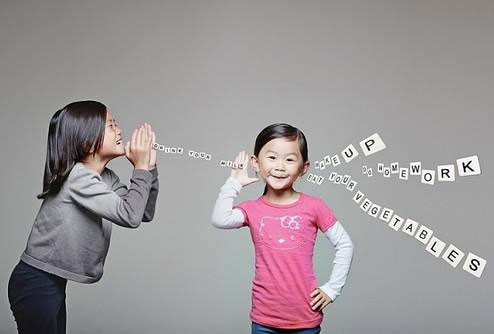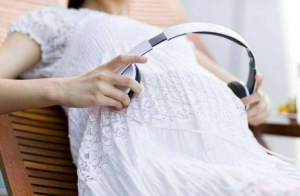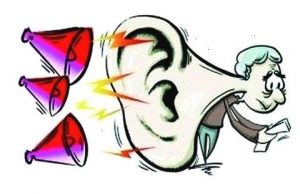Some time ago, some parents asked why their children can wear hearing aids, but they can’t understand what to say when they say it? Discuss this issue with parents today.
In the process of rehabilitation training for deaf children, I believe that many parents have encountered this problem. The child wears a hearing aid or a cochlear implant to check the threshold test. The hearing aids are very good, but the results of the speech test are not ideal. That is why it is recommended to conduct a verbal test, because we will eventually return to “say”.
Some of our parents have learned from the relevant sciences that children will not learn to speak, so we will give hearing aids to children, with hearing aids or cochlear implants, so that children can learn to listen and learn to speak as soon as possible.

But why did the child learn to listen and say that it is still unsatisfactory? There are many reasons for this. In addition to the lack of practice and late hearing intervention, there is another reason why the child does not really understand the language he hears.
Our brain has the characteristic of plasticity. The younger the child is, the larger the plastic “space” is. The normal hearing child receives the outside voice very smoothly from an early age (even from the mother’s belly), and we have The time for children with hearing loss to accept language input is relatively late, the mental development is relatively slower than listening to the child, and the way we listen to the child learning the language is slightly different from the child listening, we will give more to the child. Speech input, and repeated language training, however, in the training of such deaf children, we may ignore whether the children really understand the sound they hear.

To put it simply, when we express and describe things, we use words that are divided into two parts, some of which are figurative, that are things that are directly felt by visual, tactile and other sensations, such as cups, toys, dads, etc. Some of them are unrecognizable and cannot be directly felt through the senses, such as sadness, metaphor, immediate, lively, etc., often the retelling of these words is relatively easy, but for younger children, use these words in their own words. It is not easy to express it.
Children’s retelling of the language only needs to be heard first, and then it can be said, but independent expression needs to understand the meaning of the words, especially some words that cannot be directly described. Usually, we use the situational teaching method to tell the speech rehabilitation teaching. child. For example, the word “sadness”, when school is out, other children are picked up by Mom and Dad, and there is a little left. An experienced speech rehabilitation teacher will seize the opportunity to comfort the child. “Is it not happy? Not very sad, so the child will know that his feelings are sad now. Some children are very smart, he will immediately ask, what is the difference between unhappy and sad?
To answer this question, we must know why we are teaching the word “sadness”. The word “unhappy” is mentioned before. When we guide our children, we often use a simple word to pave the way. Like the “unhappy” in the example, the word is relatively simple, the child understood before, so he will know that the current mood is unhappy (and at the same time strengthen the words of the past learning), and the word sadness and Unhappy is a synonym, and the child will know that the meaning of the two words is similar. The “unhappy” of the previous study will help him understand the word “sadness”, and the feelings in the scene will help him understand the meaning of the word. .

In turn, answer the child’s question, “What is the difference between unhappiness and sadness?” At this time, the child can be explained. For example, if you don’t play the toy you want to play, the feeling is unhappy. Mom and Dad did not come to pick me up, this feeling is sad. The child will compare the difference between these two emotions. We always say that the child is too small to understand anything. In fact, the child understands, but it is not very expressive.
The method of situational teaching is very good at teaching children to learn language. However, for a long time in the past, we are always passively grasping opportunities. We are passively waiting for specific situations. When children are happy, we will teach him. Happy mood vocabulary and so on.
With the further development of deaf children’s speech training, in fact, we can also give children the initiative to create situational opportunities, use the way of playing games to teach children to understand vocabulary, such as the family is a good game, you can freely imagine, complete Any situation that is common in life can also accomplish a lot of things that are not possible or easy to do in real-life situations.
Since our hearing and understanding are not synchronized, hearing does not mean understanding. Our auditory development needs to be identified, identified, identified, and understood. When the understanding phase is completed, we can express it independently, not just retelling. Some experts pointed out that sometimes when we teach children’s language, we skip the understanding step and ask for retelling and correcting the pronunciation when the child does not understand. The result is that the child can correctly sound and express the standardized sentence. However, the more difficult words that appear in the sentence cannot be used independently, or the child can only use the example sentences in similar situations, and the difficult words in the example sentences cannot be used in other situations.
Therefore, in the process of hearing and hearing speech in the deaf children, it is impossible to jump the steps of “extracting the seedlings to encourage growth”. These words can only better develop the child’s ability to speak when the child truly understands, not just when they express it.
Jinghao medical hearing aid reminder:Hearing aids need to be professionally “fitted”. It is very important to choose a professional hearing aid fitting center and hearing aid fittings! You can call the Jinghao medical for any hearing problems, or you can come to the center to experience the experience. . Hearing aid free consultation phone: +86-18566295705
You can also scan our WeChat public account for more information about hearing.

Link:What problems do you encounter when you have a language rehabilitation?
REF: Bluetooth Hearing Aids, Hearing Loss, Digital Hearing AidsThe article comes from the Internet. If there is any infringement, please contact [email protected] to delete it.



